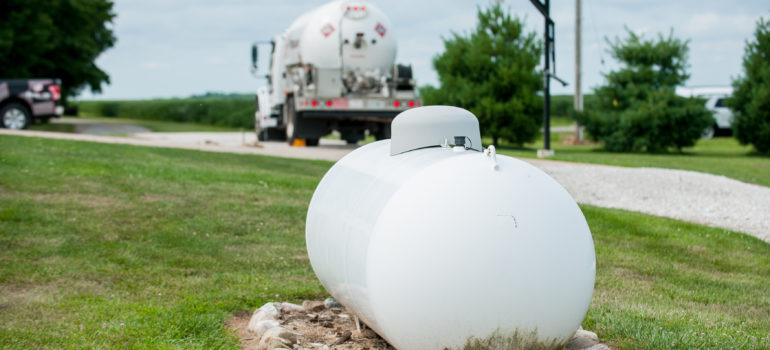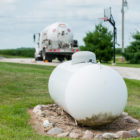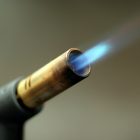Propane Tanks and Safety
Some people have misconceptions about propane. Occasionally, these mistaken beliefs involve propane storage and the safety of propane tanks. Get ready to learn about just how strong and dependable propane tanks are and why this makes propane such a safe fuel choice for your home and business.
Propane Tanks are Built to Withstand Outside Forces
Propane tanks do not explode or implode under any set of normal circumstances. In fact, propane tanks won’t rupture without having an incredible amount of heat and pressure applied to them.
Propane suppliers make the safety of every home, business, and farm their number one priority. And propane tank manufacturers design tanks with this in mind.
What are some of the measures that propane providers take to ensure customer safety?
Propane Tank Strength
Propane tanks are designed to withstand high amounts of pressure and will not rupture when used properly. Obviously, everyone should take care around propane, as with any flammable substance. But the idea that propane tanks will explode if they get knocked over or are hit by a lawnmower, or even a car, is false.
Extreme heat exposure, over a long period of time, can cause a tank to rupture, but even this is rare. A propane tank would have to endure heat, such as that from a fire, that overcomes its own ability to relieve the built-up pressure through a safety relief valve.
Safety Relief Valves
A big part of what makes propane safe for commercial and residential use is the employment of safety relief valves on propane tanks. Safety relief valves are required equipment on all propane tanks and cylinders to guard against any possibility of a propane tank rupture in all but the most extreme circumstances.
How does a propane tank’s safety relief value work? The valve is held closed under normal circumstances by a strong spring. If the pressure inside the tank rises above a certain level, this pushes against the spring and opens the valve, relieving the pressure. (This may be accompanied by a hissing sound.) The safety relief valve safeguards the propane tank against rupturing in all but the most extreme circumstances.
Additional Safety Precautions
If you’ve ever wondered why propane tanks are made in light colors, it’s actually an additional safety measure. Lighter colors tend to reflect the heat from sunlight, whereas darker colors absorb it. If a propane tank heats up, the propane inside it heats up as well, increasing pressure. The white color of most tanks is a design element that helps prevent excessive pressure buildup and keeps the tank from having to vent and release propane unnecessarily.
On hot days, especially just after a recent delivery, when a propane tank is close to being full, the safety relief valve may open slightly, releasing excess pressure. If this happens, don’t tamper with the tank or the valve! Spraying cold water from a garden hose on an above-ground tank can help to cool it down and relieve some of the pressure. Provided that the relief valve is functioning properly, it will close on its own once the pressure inside the tank decreases.
Call the Professionals
If you suspect a propane leak, don’t attempt to repair any part of the tank yourself! Always contact a professional to inspect the tank and perform any necessary service.
To the experts at Southeast Quality Propane, proper safety measures go hand in hand with excellent customer service. Reach out to us today and learn what propane can do for your home and business!






Recent Comments